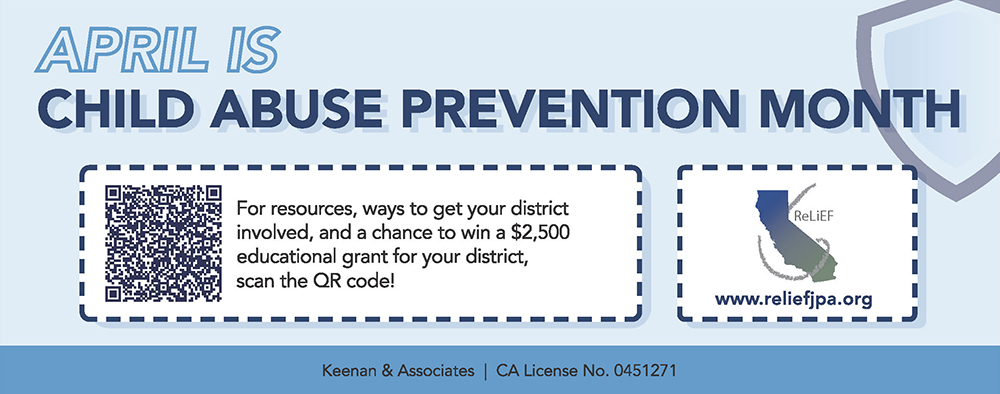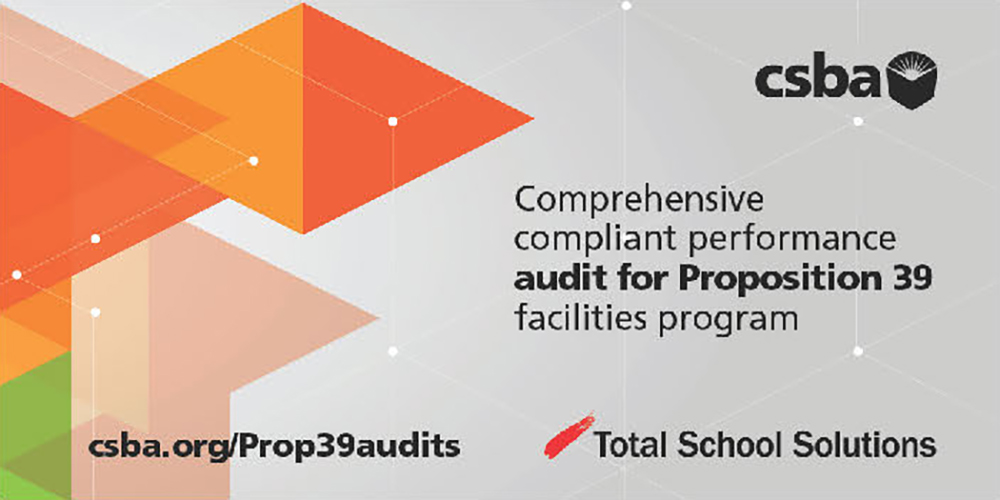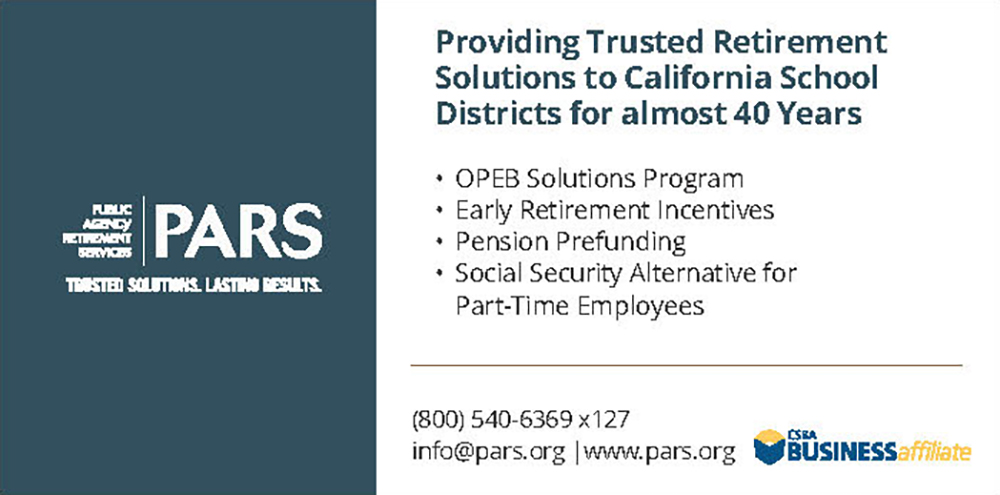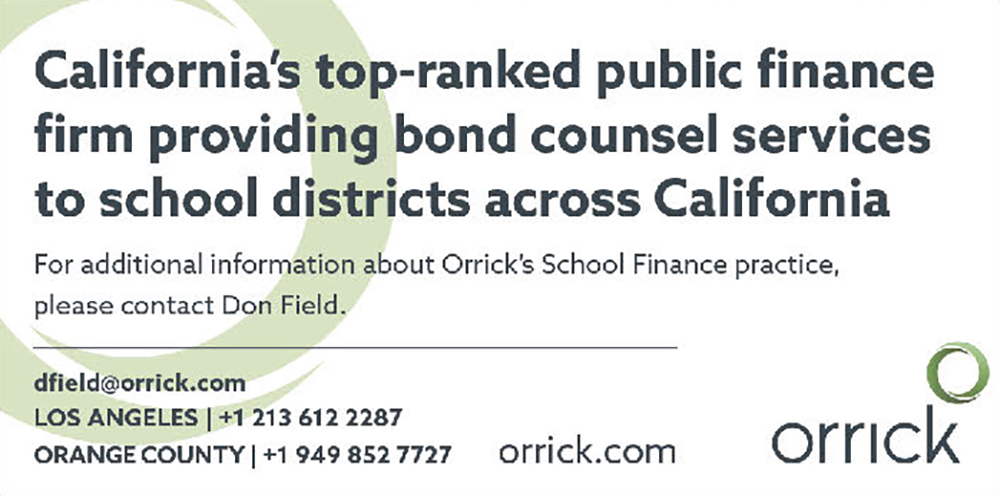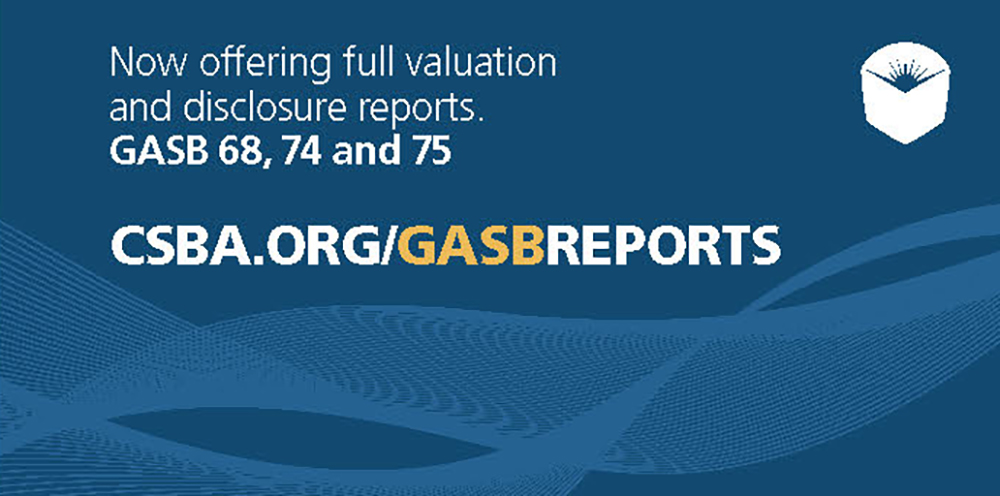“As advocates of children and representatives of our communities, meeting with our legislative leaders gave us an opportunity to hone in and convey the pertinent issues that impact our schools and solicit legislative support in addressing them,” said Alma Castro, a member of the Lynwood Unified School District Board of Education. “I had the opportunity to meet our local legislators and region trustees and superintendents, and together we advocated and solicited legislative support and action in addressing district priority issues.”



This year’s theme of “Leadership in a time of chaos, change and opportunity” will feature inspiring keynote speakers, collaboration with counterparts across the state, and opportunities for attendees to sharpen their leadership skills in sessions dedicated to community engagement, board meeting management, governance, budgeting, crisis communications and more.

Troy Flint | tflint@csba.org
Editorial Director:
Kimberly Sellery | ksellery@csba.org
Marketing Director:
Andy Rolleri | arolleri@csba.org
Staff Writers and Contributors:
Alisha Kirby | akirby@csba.org
Heather Kemp | hkemp@csba.org
Teresa Machado | tmachado@csba.org
Kristin Lindgren | klindgren@csba.org
Emily Baker | ebaker@csba.org
Graphic Design & Branding Director:
Kerry Macklin | kmacklin@csba.org
Senior Graphic Designer:
Amanda Moen | amoen@csba.org
Dr. Susan Heredia | Natomas USD
President-elect:
Susan Markarian | Pacific Union ESD
Vice President:
Albert Gonzalez | Santa Clara USD
Immediate Past President:
Xilonin Cruz-Gonzalez | Azusa USD
CEO & Executive Director:
Vernon M. Billy
California School News (ISSN 1091-1715) is published 11 times per year by the California School Boards Association, Inc., 3251 Beacon Blvd., West Sacramento, CA 95691. 916-371-4691. $4 of CSBA annual membership dues is for the subscription to California School News. The subscription rate for each CSBA nonmember is $35. Periodicals postage paid at West Sacramento, CA and at additional mailing office. POSTMASTER: Send address changes to California School News, 3251 Beacon Blvd., West Sacramento, CA 95691.
News and feature items submitted for publication are edited for style and space as necessary.

There are exceedingly few silver linings to be found in the tragedy of COVID-19. The academic and social disruption our students have experienced is profound. Yet, if there is one welcome development from the pandemic, it’s the increased attention paid to mental health. Belatedly, society and the Legislature have recognized youth mental health as both an absolute good as well as a precondition for the academic and personal development we hope to nurture in our students.
Earlier this year, Gov. Gavin Newsom announced a new proposal, the Community Assistance, Recovery and Empowerment (CARE) Court, to reinvent the way California addresses adult mental health on a statewide level. Elsewhere in the Capitol, a number of bills have been submitted to address mental health — many of them specific to student mental health. This focus is long overdue.

It’s commendable that many boards and their administrative partners realize that just offering summer learning programs is not enough to ensure desired positive outcomes for children. It is an important aspect of good governance to also understand and evaluate whether those programs are actually serving students well.
The criteria used to evaluate potential officer candidates is as follows.
A CSBA leader:
- Communicates effectively on behalf of public education and, as the face of CSBA, advocates CSBA’s vision, mission, policy platform and governance structure.
- Demonstrates advocacy for and knowledge of the diverse educational, economic, social and emotional needs of all students throughout the state through the lens of equity.
- Exemplifies strong leadership skills, ethics and integrity, including the ability to collaborate, motivate and inspire. Leads successfully in the face of ongoing change and challenges.
The Funding Early Childhood is the Right IDEA Act (H.R. 6532 and S. 3544) was introduced by Representatives Mark DeSaulnier (D-California), Rodney Davis (R-Illinois) and Jared Huffman (D-California) as well as U.S. Senators Maggie Hassan (D-New Hampshire), Robert Casey (D-Pennsylvania), Chris Van Hollen (D-Maryland) and Christopher Murphy (D-Connecticut).
The bill comes at a time when the number of children who require early intervention and preschool special education services has increased in recent years, but federal investments have failed to keep up with need. It would increase funding for programs paid for through Part B, Section 619, and Part C of the Individuals with Disabilities Education Act (IDEA).
CSBA played a major role in shaping the initial concept for the proposed legislation through the ACSA-CSBA Federal Partnership.
According to Gov. Newsom, the mandate will go into effect once all the ages of students in grade spans 7-12 or K-6 are eligible to receive a COVID-19 vaccine that has been fully authorized for that age group by the Food and Drug Administration, and after the regulatory process, once initiated by CDPH, is complete. Although Pfizer has received full authorization for its COVID-19 vaccine for ages 16 and up, being vaccinated has not been required for students of that age group to attend school. Under Gov. Newsom’s proposal, if a COVID-19 vaccine is given full authorization for ages 12-15 before July 1, 2022, and if CDPH completes the regulatory process before July 1, the vaccination could then be required for students in grades 7-12 to attend school unless they have a medical or personal belief exemption. If approved after June 30 but before Dec. 31, 2022, it could then be required for students in grades 7-12 to return to school in January 2023.

National Child Abuse Prevention Month recognizes the importance of families and communities working together to prevent child abuse and neglect. In California, there were 391,470 reports of child abuse in 2020 with nearly 60,000 of those verified child abuse cases.
Katie Albright, CEO and president of Safe & Sound, a children’s advocacy organization focused on strengthening families and ending child abuse, said in an April 2021 webinar on abuse prevention that numbers are vastly underreported and the true rate of abuse in California is about 1 million children. Albright also noted that disproportionality is a major concern in the child welfare system.

In addition to understaffing in schools, rarely do states require regular mental health screenings or fully leverage Medicaid dollars to fund certain services, according to the report card. States are also inconsistent in their teacher training and school climate requirements.

State educational agencies received waivers from federal accountability requirements for the 2019–20 and 2020–21 school years and from the assessment requirements for the 2019–20 school year. As a result, many states have not implemented all aspects of their statewide accountability systems or identified schools for support and improvement since fall 2019.

On March 17, the Biden Administration also launched the Clean Air in Buildings Challenge, which calls on all building owners and operators, schools, colleges and universities, and other organizations to adopt key strategies to improve indoor air quality in their buildings and reduce the spread of COVID-19.
On March 9, the California Department of Public Health posted updated guidance to its COVID-19 Public Health Guidance for K-12 Schools in California for the 2021–22 academic year. The changes, which went into effect March 12, drop the masking requirement for students and staff in indoor settings. CDPH is still strongly recommending the use of masks to protect staff and students.
The 2018–19 state budget included one-time funding of $75 million for the Teacher Residency Program intended to address teacher shortages, especially in the areas of special education and science, technology, engineering and mathematics, and for teachers who are bilingual. This program pairs local educational agencies with institutes of higher education (IHE) to place candidates in the classroom with mentor teachers for at least 50 percent of school hours for one year while engaging in preparation coursework. The 2020–21 state budget added an additional $350 million in one-time funds to the program.
In spring 2021, WestEd conducted an evaluation of the program to measure results and to help understand how grantees were building toward financial sustainability within the context of their one-time funding sources. The resulting January 2022 report, “Teacher Residency Programs in California: Financial Sustainability Challenges and Opportunities,” found that while program goals were being met, the financial stability of the program is concerning.

California is home to more than 3 million multilingual learners — a term that includes both dual language learners (children up to age 5) and English learners (students in the K-12 system). Despite significant progress in recent years, more efforts are needed to prepare and support teachers to foster biliteracy and meet the unique learning needs of multilingual learners.
MIG Course 3: School Finance Parts 1 & 2
MIG Course 3: School Finance Parts 1 & 2
MIG Course 3: School Finance Parts 1 & 2
MIG Course 4: Human Resources/Collective Bargaining
MIG Course 3: School Finance Parts 1 & 2
MIG Course 4: Human Resources/Collective Bargaining
MIG Course 5: Community Relations & Advocacy/Governance Integration
MIG Course 5: Community Relations & Advocacy/Governance Integration
2022 Leadership Institute | Los Angeles



